 Back to selection
Back to selection
Sundance (and Slamdance) 2020 Dispatch #7: Dick Johnson is Dead, Kajillionaire The Glorias, Boy’s State and More
 Dick Johnson is Dead
Dick Johnson is Dead For the last several years, the very first film I’ve seen in Park City has been among the festival’s best, launching my Sundance with a bang. The lucky title this year is Dick Johnson is Dead, a documentary—whatever that label means in this case—directed and photographed by Dick’s daughter, cinematographer Kirsten Johnson (Cameraperson), whose cinematic imagination couldn’t be more alive and kicking.
The imminent death, or what’s worse, the gradual ravaging by Alzheimer’s, of an aging parent is a personal and emotional minefield few are ever equipped to traverse, no less understand, when the time comes. Alzheimer’s is also a family stressor of the first order and a long-term financial drain. For these reasons, the comic zest with which Dick Johnson is Dead blends joie de vivre and joie de mort in equal measure will upset and offend some, even as it charms and touches others. A kindly but fragile grandfather in the opening scene pushes his grandchildren on a swing inside a barn, then slips and falls. Off-camera, Johnson has asked him to be careful not to fall, but 86-year-old Dick won’t be deterred. Helpless on the ground, he’s all smiles and indefatigable good cheer. A scene later, Dick is walking along a New York sidewalk as an air conditioner drops several stories onto his head. It’s a movie stunt with acute comic timing, acted by Dick himself, compos mentis, along with his body double, and one of several gruesome enactments in which Johnson imagines her father’s death as a sudden but merciful accident, an alternative fate to the disorientation and decline of dementia.
For humor this dark, all one can say is, like father, like daughter. Dick Johnson, who transcends labels of retired psychoanalyst and life-long Seventh Day Adventist, is the film’s co-conspirator despite his deteriorating condition. With Dick, a witty quip is always at the ready, at least when the camera is on. His solid good looks, smiling eyes and disarming humor—never at anyone’s expense—is central casting, and clearly a source of Johnson’s own strong spirit. For Johnson has been down this sad road before. Sections of her autobiographical Cameraperson (2016) depict her mother, who has since passed away, likewise in Alzheimer’s tragic grip. So it cannot be said that Johnson takes this subject lightly. (How could she? Alzheimer’s is heritable.) But, she asks, what if one could attend their own funeral, bask in heart-tugging eulogies before dearly departing? Or test-drive a musical-theater vision of heaven, replete with slo-mo dancers sporting giant masks of loved ones? Under a rainbow of gently falling glitter? The afterlife is a cabaret, old chum!
If this sounds more Julie Taymor than Robert Flaherty, it signals Johnson’s striking growth as a creative force, at least in the autobiographical realm. (Think Agnès Varda.) Speaking of autobiographical, Dick Johnson’s two grandchildren in Dick Johnson is Dead are Kirsten’s twins, Felix and Viva, whom she is raising with their two daddies, filmmaker Ira Sachs (Love Is Strange) and his partner. As coincidence would have it, over at this year’s Slamdance, the sister of Ira, experimental filmmaker Lynne Sachs, premiered her latest documentary, Film About A Father Who, a faceted profile of her own and Ira’s father, also named Ira Sachs, a hotel developer in Park City of all places. He developed the former Yarrow hotel, where I’m writing this review. You can’t make this stuff up.
Dick Johnson is Dead will be available on Netflix.
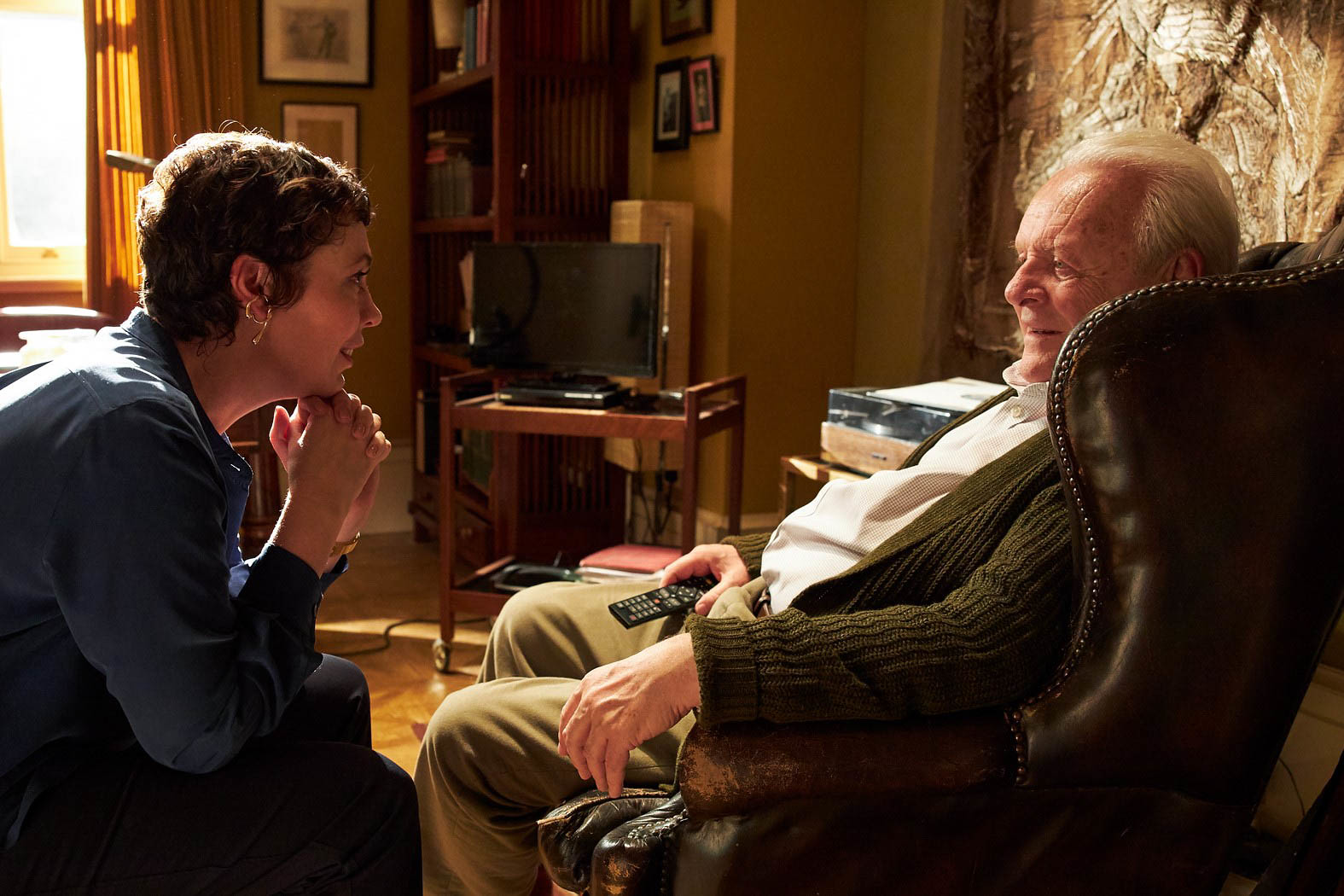
The scourge of Alzheimer’s makes another appearance at Sundance in the exquisitely acted U.K.-French production, The Father, from French playwright and first-time film director Florian Zeller, adapted from his 2014 play of the same name. Olivia Colman and Anthony Hopkins play a caring, conflicted daughter and her cantankerous father on the brink of his institutionalization. Hopkin’s character can no longer trust his own senses, no less memory. To depict the tangle of confusion and fear overtaking his perceptions, Zeller introduces a brilliant sleight-of-mind: swapping different actors for the same recurring characters—a strategy as disorienting to the father as it is to the film’s audience, who can better empathize with his disordered mental state. The prospect of Colman and Hopkins—two of the English language’s premier thespians— acting together should flag this film as special, but it’s Hopkins in a final explosive scene, stunning in its emotional ferocity, that will sear this film into our collective memory and no doubt pry loose an Oscar nomination or two.

Obsessive-compulsive disorder (OCD) is the debilitating affliction that ties together three concurrent stories of Gen Z protagonists navigating anxiety issues and anxious times in Moscow, Berlin, and New York in Nadia Bedzhanova’s feature debut, Beware of Dog, premiering at Slamdance. A failing relationship in Moscow, budding lesbian romance in Berlin, and self-pummeling former boxer in New York are the armatures on which the narrative flicks back and forth, from Russian to German to English, as fluidly as switching apps on a smart phone. While OCD and depression take their toll, Beware of Dog is anything but dour. Interactions are as vivid as one character’s pink hair, and the dialogue, at times conveyed by text messaging, snappy and incisive. (The Moscow and Berlin characters are cousins, frequently in touch.) No drama I’ve seen here is as finely tuned to Gen Z’s zeitgeist, an outlook oblivious to national boundaries even if nationalist politicians are not. Bedzhanova, who studied journalism in Moscow and film directing at SVA in New York, is a fledgling director to watch.

Losing a child, in contrast to a parent, is the theme of Identifying Features (Sin Señas Particulares), premiering in the World Drama section at Sundance. This tale of two young men leaving Guanajuato in central Mexico to attempt a border crossing in Arizona turns to tragedy when word arrives back home that the bus that took the men north was stopped and robbed, with no survivors. However only the body of one of the men is identified. Magdalena (veteran actor Mercedes Hernández), the illiterate mother of the other missing young man, decides to venture north in search of her son, in the slim chance he might be alive. I won’t give away here what she encounters in a terrifying twist that is all too credible, but suffice it to say that Identifying Features won’t encounter the flack aimed at the book tour of American Dirt because of its non-Latinx author. Director Fernanda Valadez is from the Guanajuato area, and most of the production, including producer and DP, are likewise Mexicana. North American rights for Identifying Features, including theatrical and VOD, were picked up here by Kino Lorber.
The handsome, naturalistic cinematography in Identifying Features by Claudia Becerril Bulos relies on available light to convey a stark, sometimes starkly beautiful, hard realism, occasionally to hallucinatory effect. Despite the borrowings from documentary technique, never is the audience led to believe that that what is on the screen is a documentary. The same can’t be said for Bloody Nose, Empty Pockets in the U.S. Documentary Competition at Sundance. Purportedly a gritty vérité shot by brother directors Bill Ross and Turner Ross over 24 hours on the last day of an obscure Vegas dive bar going out of business forever, with barflies and regulars memorializing their final evening together through boozy camaraderie, sentimentality, and general rowdiness—it is, in truth, a skillful concoction. The bar is in New Orleans, where the brothers Turner live. It is not closing. The patrons and bartenders are individuals who were type-cast from local New Orleans watering holes. In other words, the drunken ramblings about how much this bar, The Roaring Twenties, has meant to its denizens over the years, about how it houses a genuine family, more genuine than in the real world—all of this is alcohol-fueled improvisation by people who have never met before.
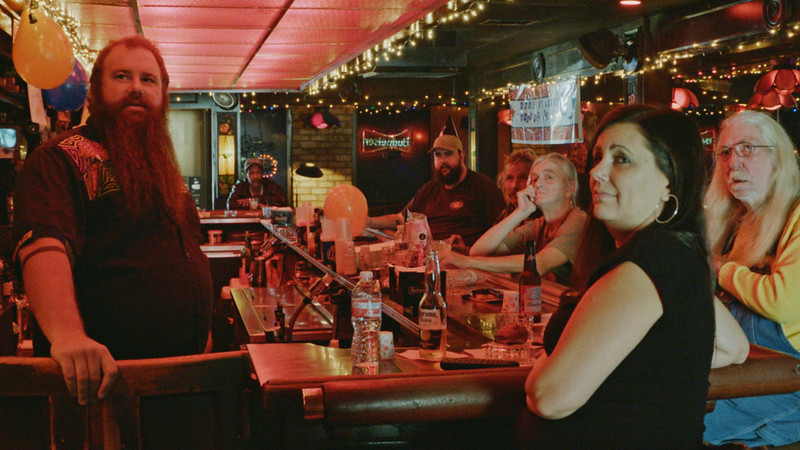
So what do we have here, a documentary about the influence of alcohol on improvisatory, if amateur, ensemble acting? If the answer is a documentary about the consequences of hard drinking, this brings to mind the controversies surrounding the not-simulated blowjob scene in Vincent Gallo’s 2003 The Brown Bunny, conversely a drama accused of tipping over into the documentary realm. I have no problem with experimental hybrid forms fusing documentary and drama—I’ve made them myself—but how on earth is this a “beguiling approach to nonfiction storytelling,” per Sundance’s thumbnail description? What is the nonfiction part? And isn’t the alcohol doing the talking? Worse, The Iceman Cometh by way of D.A. Pennebaker this is not. Have you ever been the only person at a party where everyone else is drunk and laughing riotously at jokes and unruly behavior that are less funny to a sober person?
I don’t believe there is a bloody nose or an empty pocket anywhere in this film. In fact, no cash either, none passed to the bartender or littering the bar as loose tips. This was the first “tell” for me that something was off, not what it appeared to be. I do salute the open creativity that went into conceiving and making this experimental film and only wish the result had been placed in a more appropriate section at Sundance. I am not a documentary purist—far from it—but alternative facts are not my thing. I remain a stickler for authenticity in documentaries, and I don’t know what can be considered authentic in this film beyond the consumption of alcohol and subsequent drunken acting out. If you do wish to experience an authentic down-and-out evening in Las Vegas, ride the bus system, which I’ve done too many times. It’s how life’s losers get around. You will encounter an endless stream of characters you couldn’t invent, and you won’t have to buy any of them a drink.
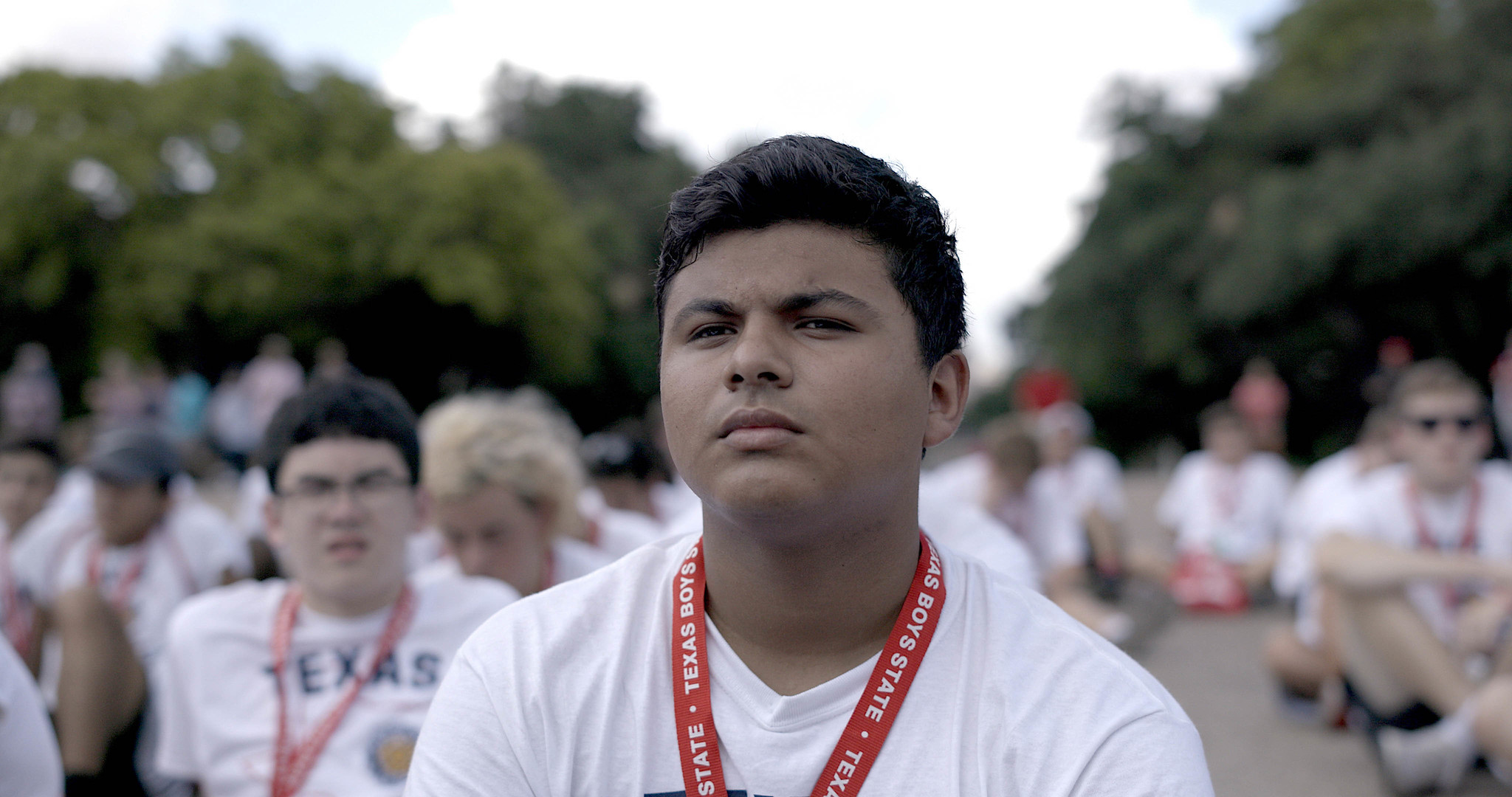
Bloody Nose, Empty Pockets is one of four films in the Documentary Competition at Sundance from Concordia Studio, the new production outfit bankrolled by Laurene Powell Jobs, whose documentary efforts are overseen by Davis Guggenheim (An Inconvenient Truth). Another of Concordia Studio’s films, Boy’s State, directed by the husband-and-wife team of Jesse Moss and Amanda McBaine (The Overnighters) is a ball hit out of the park and into the next county. Boys State (there is also a Girls State) is a week-long summer leadership program for high school seniors sponsored by the American Legion and held in most states since the mid-1930s. American Legion sponsorship suggests a rightward political tilt, and Moss & McBaine chose one of the most conservative Boy’s State events in the country, the Texas Boy’s State held in the Texas capital of Austin. What’s unique, and uniquely fascinating, about this program is that in the span of the event’s single week, the 1,000+ boys in attendance divide into two political parties, the Nationalists and the Federalists, select a party leadership, pull together a party platform, and nominate a party candidate for “governor.” At week’s end, an election is held and a governor elected. As an exercise in Jeffersonian democracy, what could go wrong?
But somehow one of the parties veers rightward, espousing gun rights, opposing abortion, and resorting to social-media dirty tricks and cynical truth-bending. The other party, while not exactly liberal, nominates for governor a shy boy of Mexican heritage, Steven Garza, whose eloquence grows and whose speeches become truly moving. (If this kid aspires to a national political career, this film won’t hurt his chances. He’s already spoken before the Texas Democratic Convention.) Other kids who demonstrate raw political talent grow prominent in the film’s storyline too, including a floppy-haired rich jock who can be thoughtful but never exercises his better angels (reminds me of Rick Perry). As in George Orwell’s Animal Farm, this starting-from-scratch to build a fresh (if make-believe) representative government somehow reproduces the same archetypes that have sewn actual national division of late. Others in Boy’s State emerge as budding political operatives, learning cynicism, willing to lie in order to win at all costs. As I said, fascinating. Also thought-provoking, and at times suddenly emotional. No wonder Apple at Sundance snapped up Boy’s State for $10 million!
Check out Boys/Girls State in Wikipedia and be prepared to pick your jaw off the floor as you read down the list of young men who were Boys State alumni (Bruce Springsteen? James Gandolfini?), many of them today’s headline politicians, on both sides of the aisle.
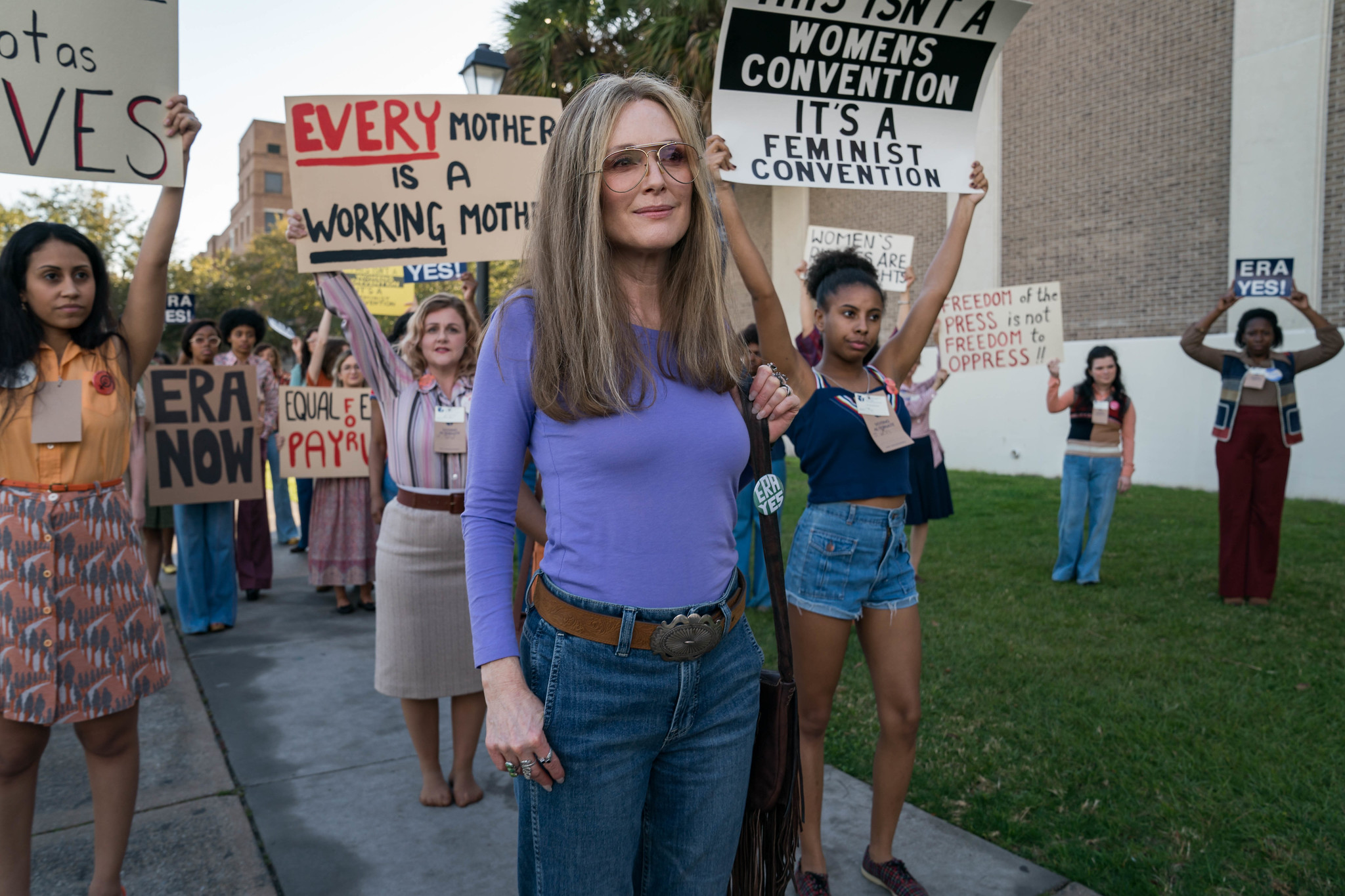
Julie Taymor’s The Glorias is that rarity, a cultural touchstone, one that every young woman and every young man ought to be required to see, if for different reasons. Young women should see it to better understand the depth of struggle waged by second-wave feminists, those women with one foot in the demure 1940s and the other firmly planted in the liberated 1960s—an epochal transformation too often taken for granted these days. (What happens when you take hard-earned rights for granted? They get taken away. I’m looking at you, Trump-appointed Supreme Court justices.) Young men ought to see The Glorias to gain insight into what their mothers and grandmothers went through to free themselves from the entrapment of male expectations.
Based on Steinem’s 2015 autobiography, My Life on the Road, Taymor’s version tracks Steinem’s life in more-or-less conventional narrative order, from childhood with an emotionally fragile mother and itinerant antiques salesman father, to her attending Smith, trekking through India for a couple of years, working her way up the journalism ladder in New York during the Mad Men era, founding Ms. Magazine, and ascending to her leading role in the Women’s Movement.
While there are no animal masks or giant puppets, this is still a Julie Taymor film, and Taymor enlists a gang of four actors to play Steinem as child, teen, young woman (Alicia Vikander), and mature icon (Julianne Moore). As a thematic vehicle (literally), Taymor uses a bus interior in black & white as a shared memory-space in which the four Glorias traveling life’s road can stare out of the window at passing scenery, alone or in the company of each other. This sometimes provides for interesting exchanges. As dialogue, are they internal or external?
Taymor’s mother was a political scientist and women’s rights activist prominent in Democratic Party politics, so this may be Taymor’s most personal film. Without a doubt it is her most important.

Miranda July is not everyone’s cup of tea, but Kajillionaire, her romantic crime film at Sundance, while unconventional, proves ultimately irresistible. Richard Jenkins and Debra Winger play a scam-artist couple whose lone adult daughter, Evan Rachel Wood, was raised from childhood as an adult and fellow thief. The take, in other words, was always split three ways. I’ll skip the detail that they live adjacent to a bubble factory that overflows on schedule, or that Wood’s character, Old Dolio, is named after a mark who failed to deliver before he croaked. These things explain themselves in good time. Eventually Gina Rodriquez’s character, Melanie, shows up, a saucy motor-mouthed Puerto Rican spitfire with a boring job and fantasies about the Ocean’s 11 lifestyle. The ensemble work is wickedly good, but Evan Rachel Wood is the film’s standout, except where eclipsed by Gina Rodriquez. No need to spill more. It’s a Miranda July film. It ends sweetly with a kiss.
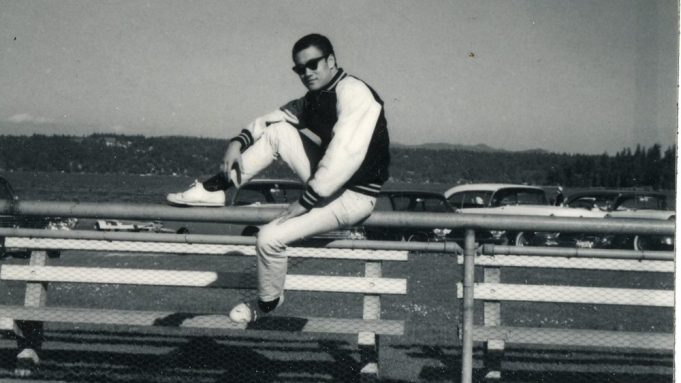
ESPN arrived at Sundance with two documentaries, both first-rate. Be Water, in the Documentary Competition, is director Bao Nguyen’s take on the extraordinary life of Lee Jun-fan, known worldwide Bruce Lee, the actor, poet, and martial arts virtuoso who died suddenly, on the cusp of world fame, in 1973 of a brain swelling. He was only 32. Born in San Francisco to a Cantonese opera singer/film actor and an Asian mother with European ancestry, he grew up in Hong Kong, appearing in his first Hong Kong film as an infant. As a child and teen he had several further film roles before being packed off to Seattle by his father to attend university—in truth, a gambit to get him away from trouble-making influences in HK. Be Water details Lee’s subsequent efforts to succeed in Seattle, to marry and start a family, and to crack Hollywood. If you saw Quentin Tarantino’s Once Upon A Time in Hollywood, you may remember the scene in a studio stunt zone in which a caricature of Bruce Lee gets his ass kicked by Brad Pitt’s character. That would never have happened. Be Water opens with an early Hollywood screen test of Lee, in which he is asked to demonstrate his martial arts moves. Lee invites an elderly gentleman to the set to stand next to him, then proceeds to carve the air around the man with flying hands and kicks, touching not a hair on the man’s head. At 24 frames/second, the camera barely manages to keep up. It’s stunning to behold.
Lee was also an exceptionally eloquent letter writer. I didn’t know about his poetry. (“Be water” is from one of them.) This insightful and skillfully made film is everything Bruce Lee fans could have wished for, but it’s also something more. Lee was a contemporary of Muhammed Ali, he came of age during the 1960s, with its war in Vietnam and Civil Rights struggles in the American South. One of Lee’s girlfriends before he married was a Japanese-American who was removed to an internment camp during WW II. Lee was deeply proud of his Chinese ancestry and acutely aware of the West’s history of racial superiority and colonialism. His own films were informed by this awareness. To the credit of Bao Nguyen, Be Water is too.

ESPN’s two-part, 3 hour 20 min. film, Lance, dissects the rise and vertiginous fall from grace of cyclist and seven-time Tour de France winner Lance Armstrong, stripped of his titles for doping. It is directed by the estimable Marina Zenovich (Roman Polanski: Odd Man Out). According to Lance, from childhood Armstrong bullied other kids. He was always ring-leader, a headstrong, reckless, arrogant, aggressive jerk whose obvious remarkable athletic talents propelled him to early fame. Then, at 25, he famously overcame stage-four testicular cancer that had spread to his lungs and brain. Given little chance of survival, he not only regained his health but founded the Livestrong Foundation to fight cancer, then won seven Tour de France titles in a row. Doping or no doping, this is the stuff of a champion, a person who is best at what they do.
That Armstrong is a controlling personality is apparent from the first frame. That he feels any genuine contrition is doubtful. He says several times that were he to do things over again, he would do everything the same way. I suspect he feels that back in the day, everyone in the sport doped, and he would have been professionally negligent not to—and he may be right in this. Most fascinating to me were the vintage clips of him looking directly into the camera and sincerely, passionately lying time and time again, denying he had ever doped—on videotape, of course, which never forgets. Reminiscent of that guy in the White House.
Zenovich is an expert interviewer, tossing precise questions like darts, mostly hitting the bullseye. It’s a fascinating match-up. (Lance is part of ESPN’s “30 for 30” commemorative 30th anniversary series that commissions 30 well-known directors to make 30 films about sports events or phenomena of the past 30 years.)

Another arrogant, narcissistic, charismatic overachiever is profiled in Netflix’s Into the Deep—and this guy literally goes off the deep end. In 2016 The Australian filmmaker Emma Sullivan approached Copenhagen-based inventor Peter Madsen with a proposal to follow and film him and his crew as they endeavored to built a D.I.Y. rocket to fly into space. Madsen had already designed and fabricated a small submarine, and his Munchausen-like fantasy projects, the subject of his TED Talk, had attracted a small coterie of believers, young engineers and programmers who agreed to donate their time and labors to realize Madsen’s dreams. In August 2017 the Swedish journalist Kim Wall boarded Madsen’s submarine alone with him for an underwater day trip. She was never seen again. Days later Madsen was arrested. A torso washed up. Limbs and a head were recovered, weighted to sink to the ocean floor. Sullivan continued filming the confused and devastated members of Madsen’s crew. Links to snuff films and worse are found on Madsen’s laptop. How had they not suspected? Upon reviewing a year’s worth of interview footage of Madsen, Sullivan found chilling moments she hadn’t noticed at the time. The final scene of Madsen on camera in an unprompted moment, speculating on how a psychopath could possibly recognize that he was indeed a psychopath, elicited a gasp from the audience. Anthony Hopkins couldn’t have infused this moment with more raw evil.

Tesla, another profile of a “mad” inventor, Nikola Tesla, the enigmatic father of alternating current, is the new drama written and directed by veteran indie Michael Almereyda (Experimenter, Marjorie Prime), who says he has dreamed of completing this project for decades. Sadly, it lacks electricity. At a Q&A, Almereyda was up front about the fact that Tesla is based on the first script he wrote when he was 20 years old, and I’m afraid much of the dialogue sounds like it. He was also candid about the minimal budget. But while it can be cheeky and fun to toss anachronisms into a period story—Tesla’s arch-rival Edison at a bar checking his smart phone for messages, for instance—such artificiality can also come across as a cheap ploy. Edison and Tesla stabbing each other with ice cream cones, really? (Which weren’t around until decades later, and only then in the form of wrapped sugar-cone waffles, not the stubby, molded type shown in the film.) Or actor Ethan Hawke as Tesla proclaiming “alternate current!” I’m no Tesla expert, but I have visited the site of Tesla’s two-phase alternating current generators at Niagra Falls and the decrepit site of his wrecked Wardenclyffe Tower on Long Island. I know he was thin, elegant, and 6’ 2”, which was a towering height in those days. Contemporary descriptions always mention this. Ethan Hawke is not the tallest actor in many scenes. Maybe Tesla didn’t aim high enough.
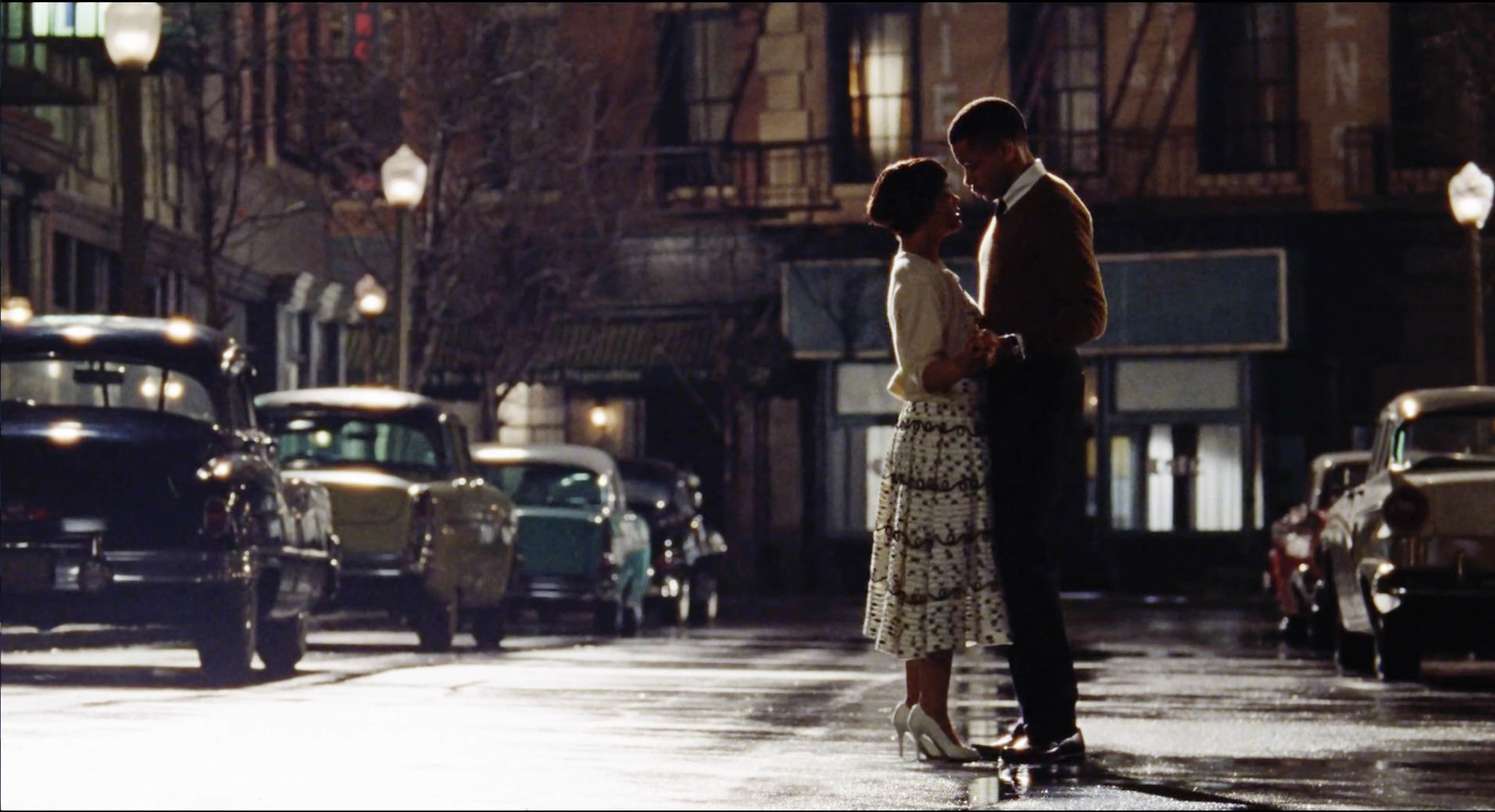
I don’t know much about the production of Sylvie’s Love, written and directed by Eugene Ashe, but I do know that it is a sumptuous romance of the old-fashion sort Hollywood studios don’t make any more, and that Tessa Thompson has more range than I ever imagined, and the she and Nnamdi Asomugha, a breakout in Sundance 2017’s Crown Heights, have chemistry to burn. The year is 1957, the place is Harlem, and a talented young tenor sax player, Robert, spots a cute girl behind the register of a small record store. To meet her, he applies for a job and is hired to stack records by her handy, kindhearted father. Over the next nearly two hours, we follow the joys and missteps—a decade’s worth of missteps—of Robert and Sylvie, clearly in love with each other, as they navigate treacherous yet shifting shoals of gender, class, and new roles for women brought about by protest movements of the 1960s. (Cf. The Glorias, above.) All the while, Tessa Thompson wears a succession of wigs, one cuter than the next, and Technicolor outfits designed to make you fall in love with her too.
The icing on the cake of Sylvie’s Love is a soundtrack full of lush ballads of that era, sung by the likes of Nancy Wilson and others. What made many of those syrupy movie romances from that era memorable were their indelible theme songs, which could stand on their own and often became standards. Songs, for example, like Johnny Mandel’s The Shadow of Your Smile, sung by Astrud Gilberto, from the 1965 film The Sandpiper—which is on the soundtrack of Sylvie’s Love. Ironically, while there is indeed a romantic theme written for Sylvie’s Love, it isn’t particularly catchy or tuneful. I can’t remember or hum any of it. If only today’s film romances could rediscover the power and poetry of yesterday’s sultry, melancholy ballads! Laura… Moon River… Raindrops Keep Fallin’ on My Head…
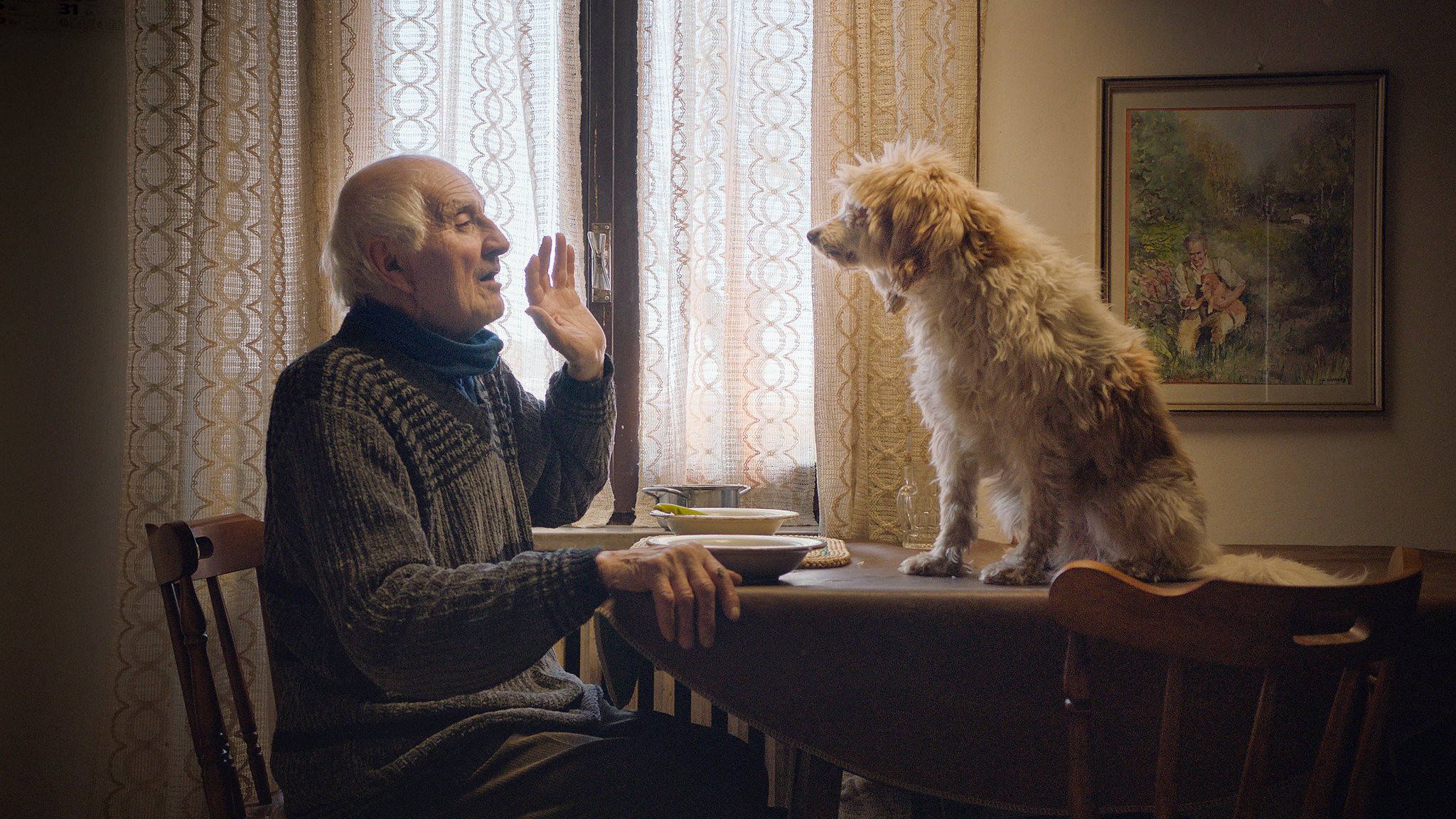
Lastly, Sony Pictures Classics dropped significant coin on Michael Dweck’s & Gregory Kershaw’s The Truffle Hunters, a documentary about, well, dogs sniffing around for buried “fruit bodies” of hypogeous, or underground, fungi during their October to December sexual phase. Yum!
In fact, the figure was $1.5 million, and Sony Pictures Classics is gambling that the rest of the world will be as thoroughly charmed by The Truffle Hunters as were Sundance audiences. Of course the film is really about the dog’s owners, or as the film’s official logline would have it, “a dwindling group of joyful old men”—mostly in their late 70s or 80s, cut off from the internet and fast-paced living—as they hunt with “their faithful dogs… for the world’s most expensive ingredient: the white Alba truffle.” This activity takes place along the hillsides of the Langhe, Roero and Montferrato areas of Italy’s northern Piedmont region—although no one knows for sure exactly where. The trifolau, or truffle hunters, are solitary souls who zealously protect the locations of the particular oak trees that annually host the precious white truffles on their roots. To avoid giving away their secrets, they often enter the wooded hills at night under moonlight. Even then, only a dog trained to sniff out white Alba truffles can pinpoint where they’re buried.
Dweck and Kershaw mostly emphasize the quiet simplicity of these men’s lives, with soft, natural interior lighting that evokes Vermeer or Rembrandt. The camera is often locked, with a wide frame, whether dog and owner are sitting at (or on) a table sharing a meal, or working together in a rustic barn. One of few exceptions to a locked-off camera is a camera somehow attached to a dog’s head, so that audiences can experience the hunt from a panting, sniffing, scampering point of view. Delightful!
(All photos courtesy The Sundance Institute, except Beware of Dog, courtesy Slamdance.)
